The M1 carbine was an American semi-automatic rifle that was intended to be lighter weight than a full-sized service rifle for non-front line troops, like support personnel, while still providing more firepower than a pistol; however many soldiers appreciated its lighter weight and carried them into intense front-line combat anyways [1]. The carbine was chambered in .30 carbine, a much lighter cartridge than the .30-06 rifle rounds the M1 Garand used, typical for most service rifles during the early 20th century. The M1 carbine was primarily used by US forces during WW2, but it was also used in limited numbers by other Western Allies, including Free French forces [2] and certain British Special and Airborne Forces [3]. After WW2, the US continued to use the carbine as well as its select fire M2 derivative, in Korea and in limited numbers in the Vietnam war, particularly the earlier part [4]. The M1 carbine and accessories were also widely exported to western-aligned nations as war aid. The French military extensively used it in Indochina and Algeria, with the Marine Commandos even making a special bayonet for it based on the Fairbairn-Sykes blade design [5]. M1 carbines were also extensively used by the South Vietnamese military [6][7], its allies, and other US allies in Asia such as Thailand, Korea, and Japan [8]. Naturally, these factions’ communist-backed insurgent adversaries captured and used significant amounts of the carbine until Communist Bloc aid became more common [4][6]. Some carbines even made their way to Angola, where an M2 carbine was notably the British mercenary “Colonel ‘Mad Dog’ Callan”‘s weapon of choice in his ill-fated 1976 expedition [9].
World War 2 (1943):


Typical example of a US issue WW2 M1 carbine pouch that was intended to be worn on the belt, as seen by the male snap, but it was often slipped over the carbine’s buttstock since it was coincidentally the right size [10]. This pouch was made by Walter E. Allen in Oklahoma [11] in 1943.
Inside:
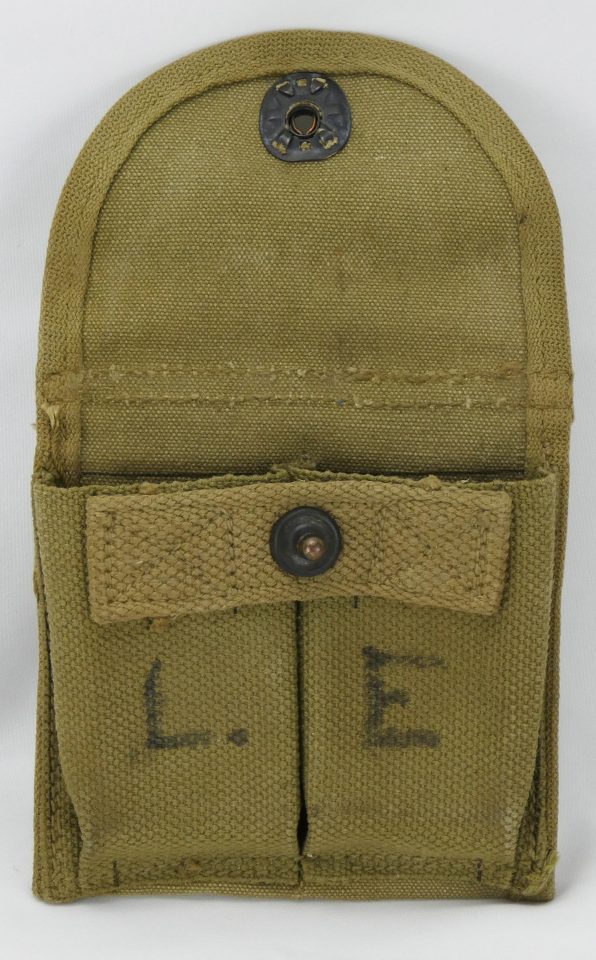
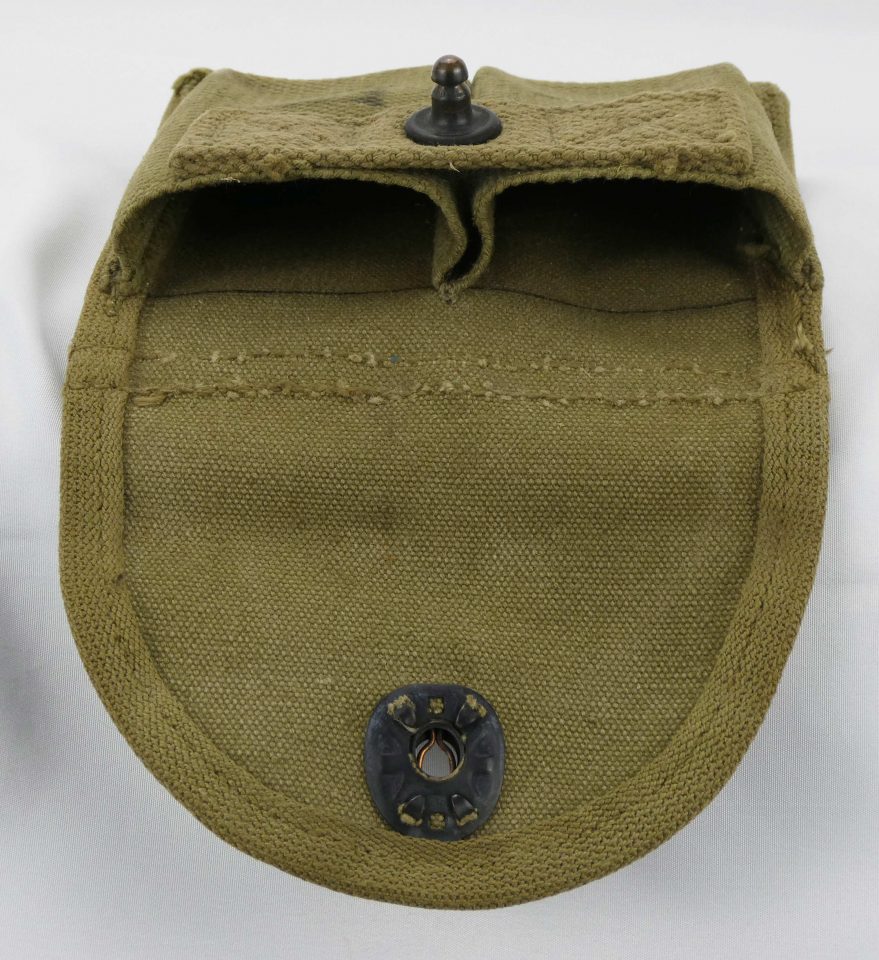
Post-World War 2 Rigger Modified Extension (1945 – 1947):
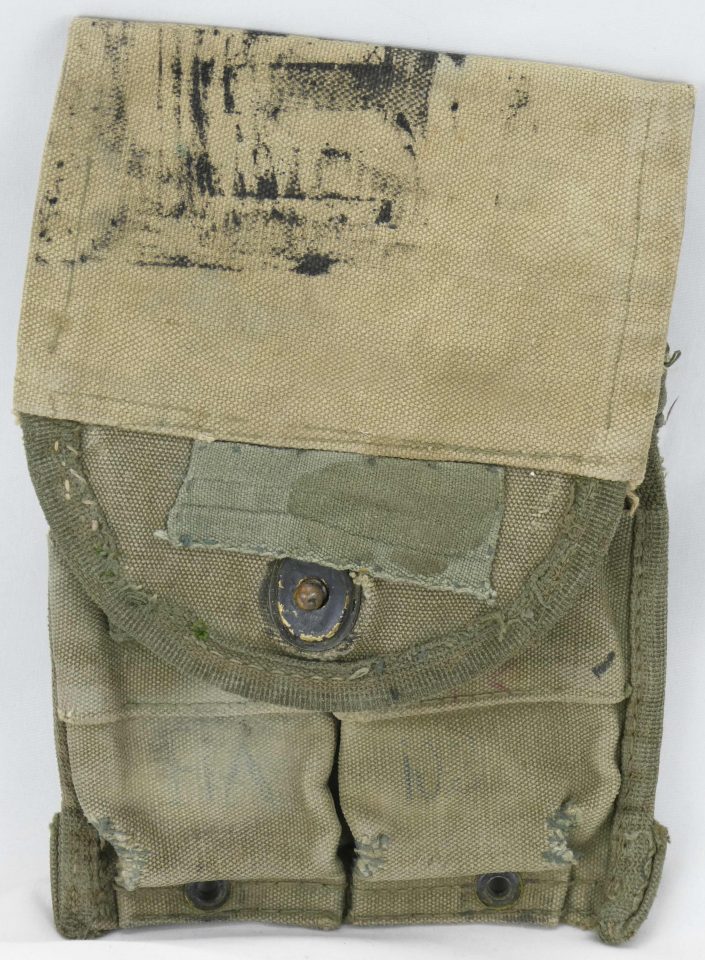
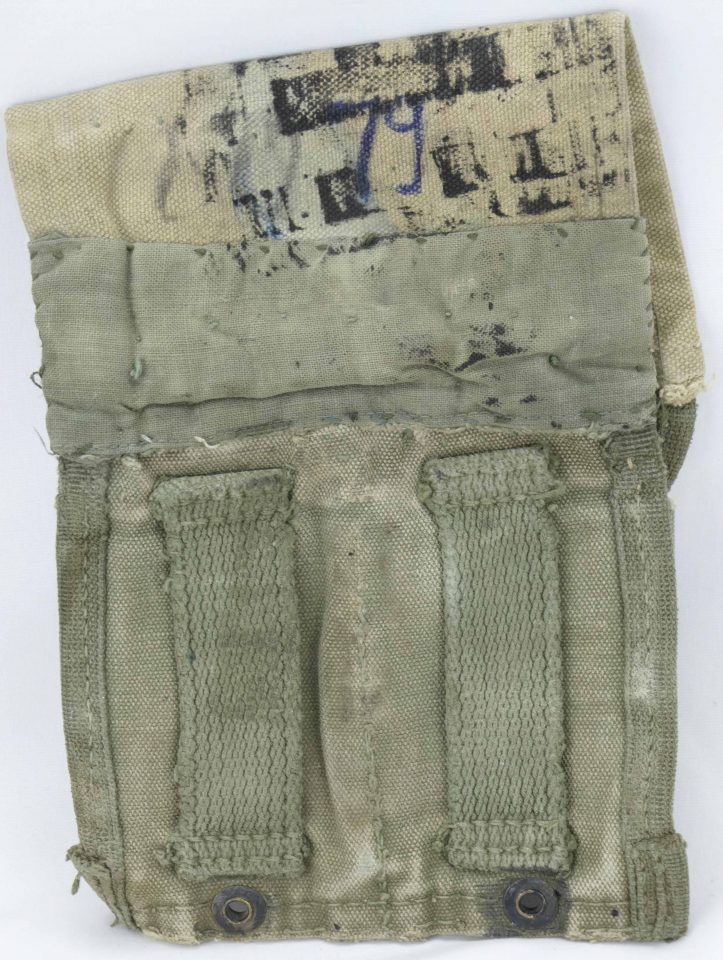
These pouches were made between 1945 – 1947 for then-new 30 round M1 carbine magazines since specially made pouches to fit those were not available. The pouch flaps were extended by parachute riggers using surplus canvas so the pouch can be closed over the longer magazines. The original base pouch was probably made after the 1943 example since the separated webbing belt loops are a characteristic of later production carbine pouches [12].
Flap:

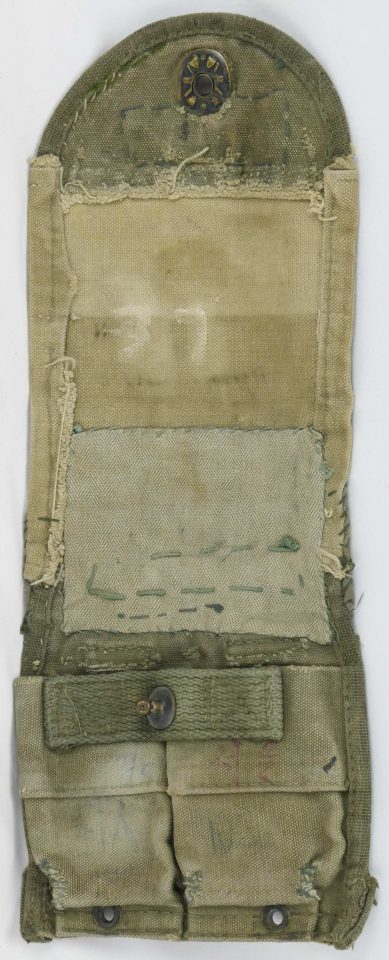
The herringbone twill (HBT) material appears to be from a Marine Corps dungaree [13].
Snap:
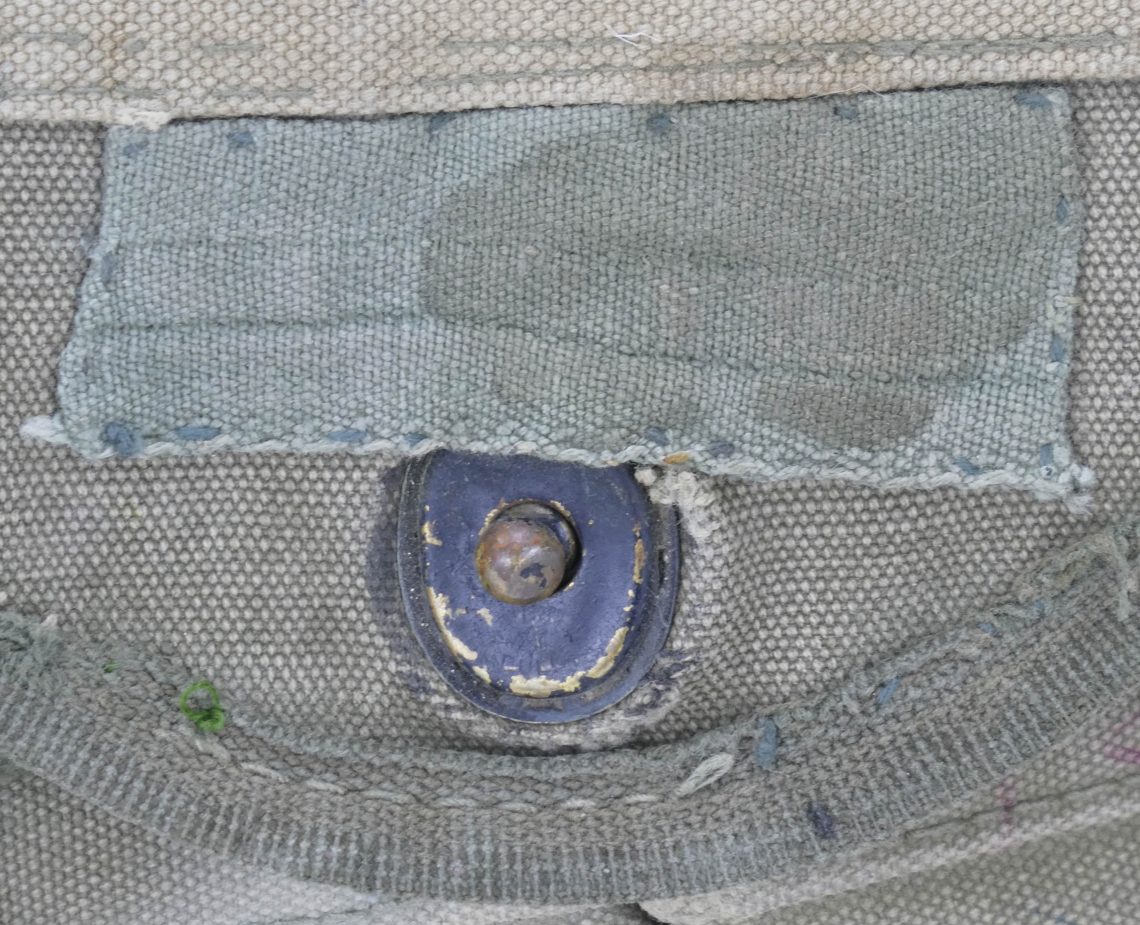
Unknown War Aid Export (1960’s – 1970’s?):

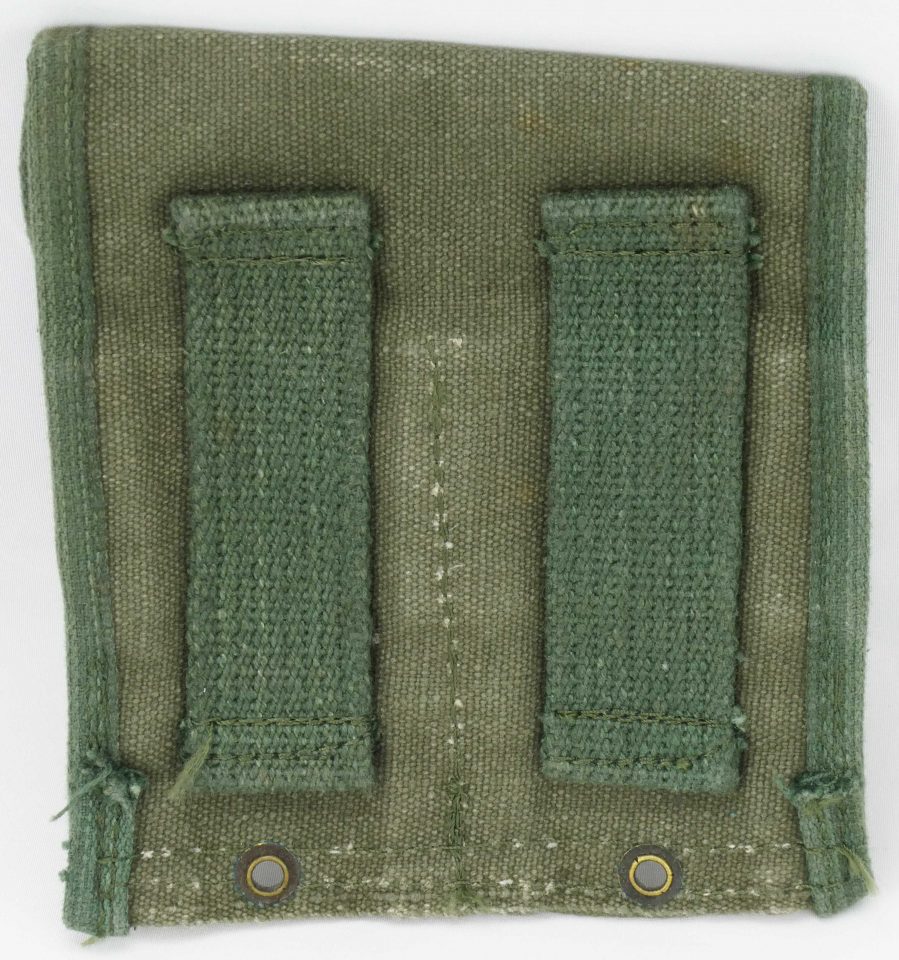
These pouches are often sold on eBay and other markets as some combination of MAC V SOG, CIA, or CISO item. It is unknown what country or program these pouches were intended for since they are completely sterile [14]. The CISO AK pouch uses similar materials.
Inside:


Snap:
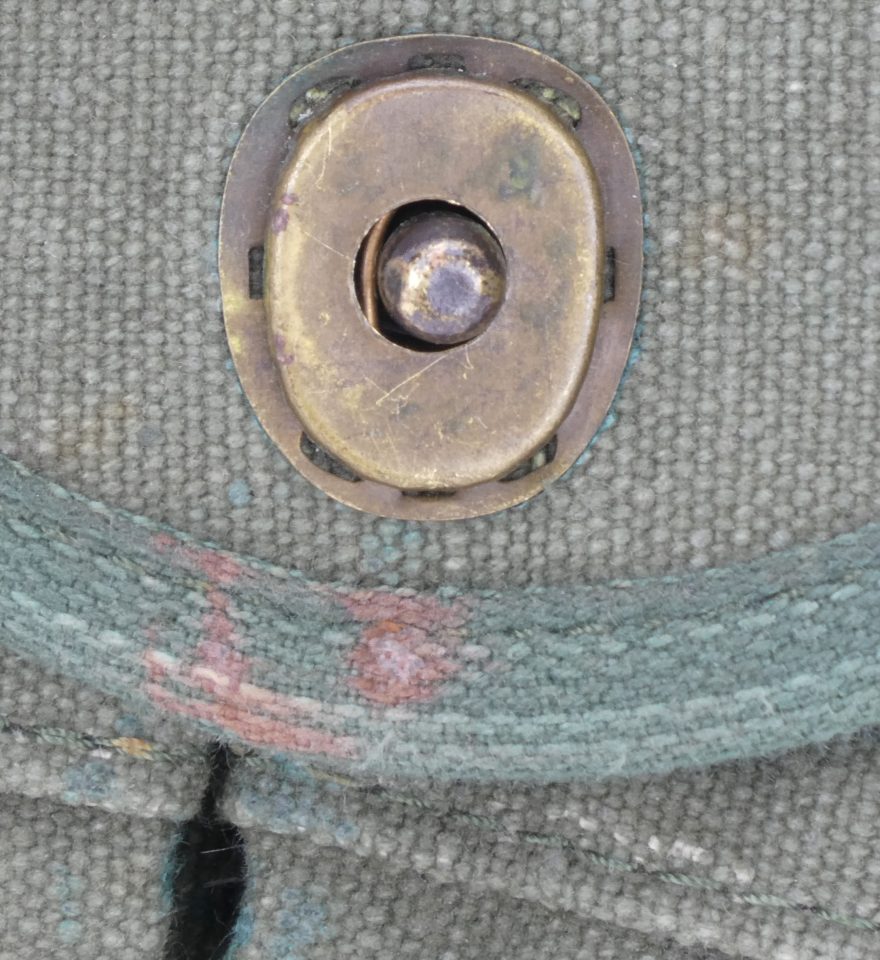
No markings on snap.
Material Comparison with Thai Bandolier:
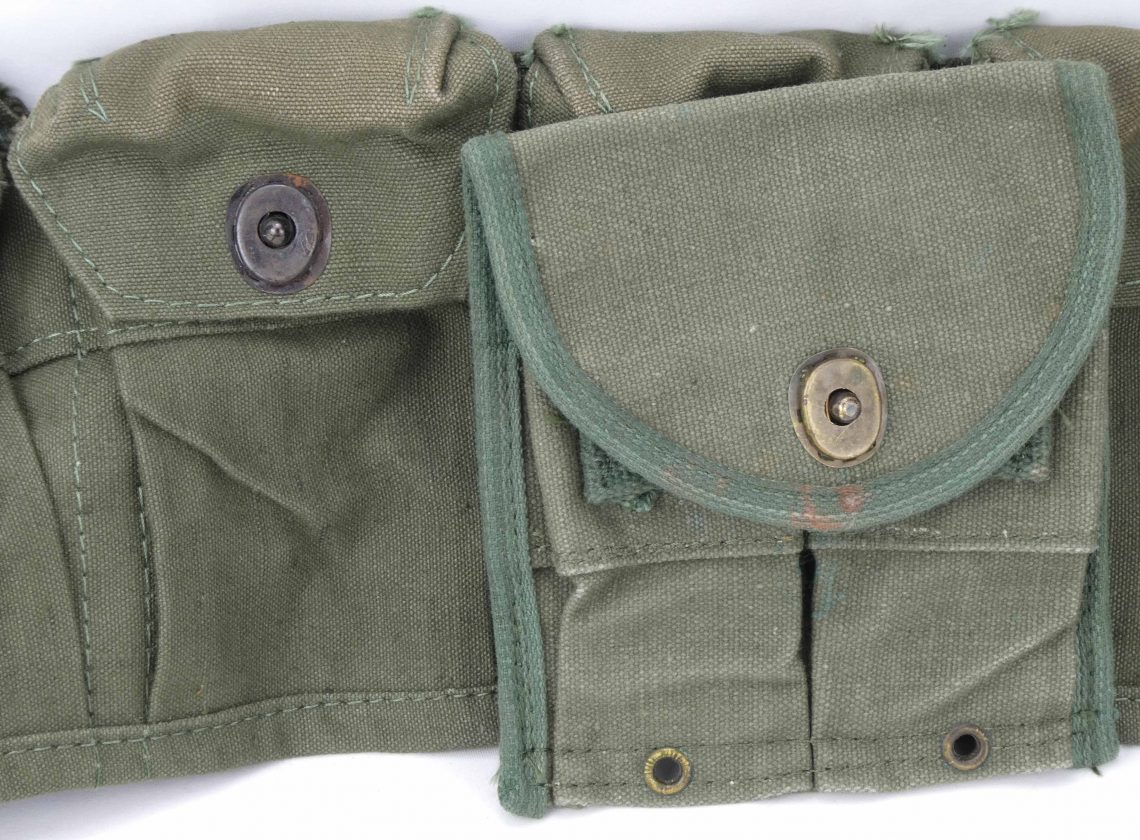
Thai bandolier is in the back.
